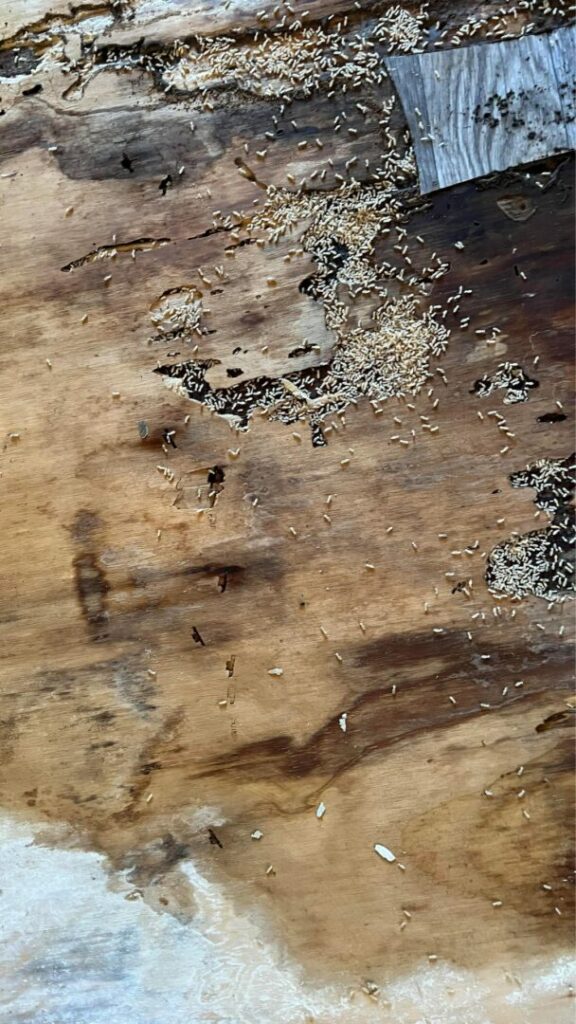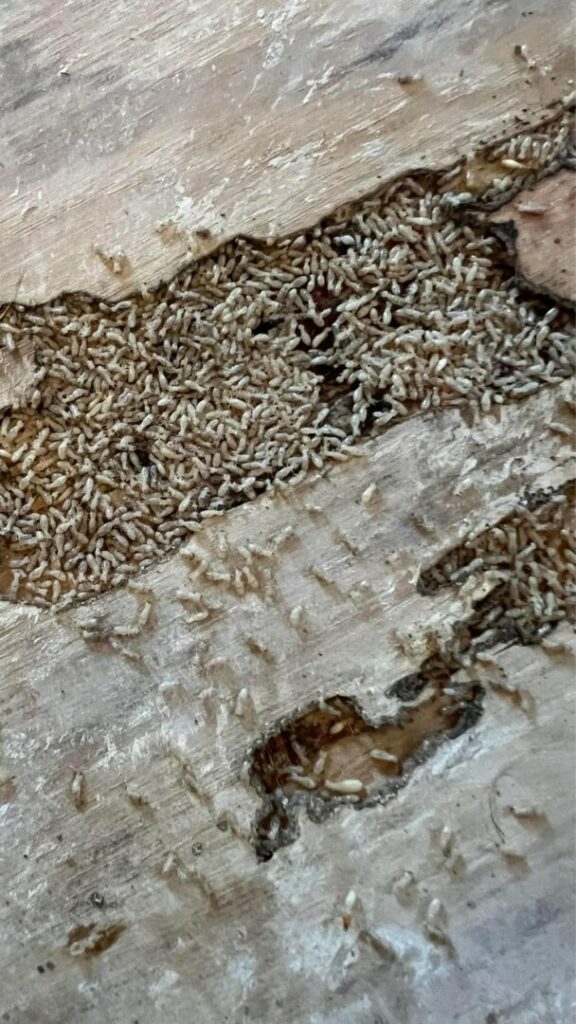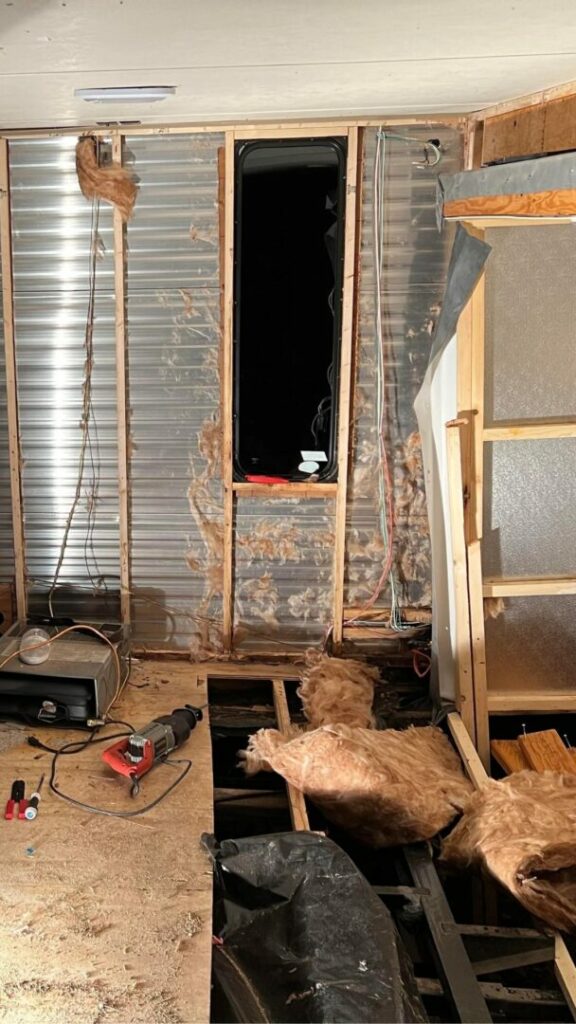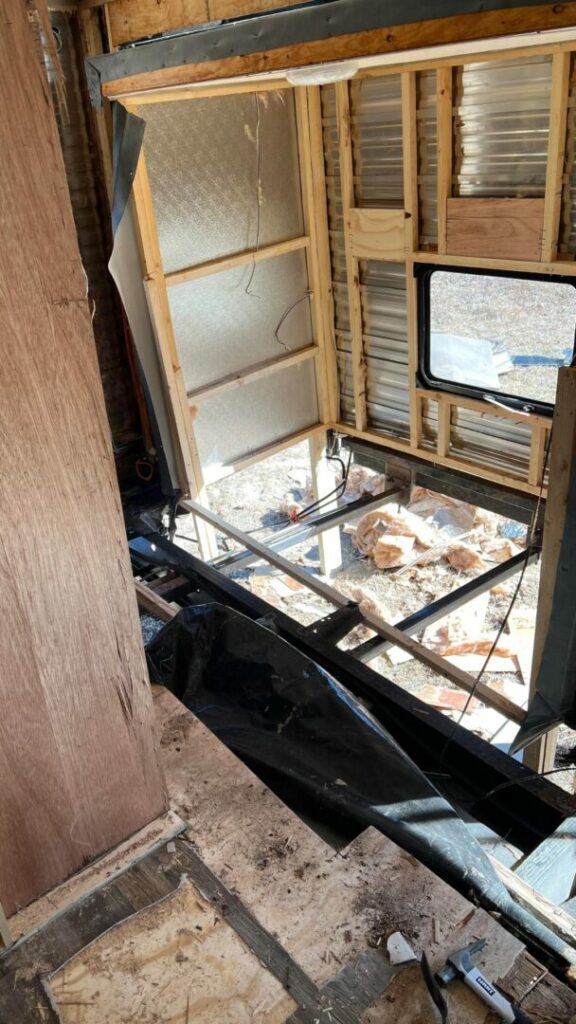Table of Contents Show
It’s common to hear someone getting termites in their home or garage. But what are the signs of termites in an RV? Is that even possible?
Getting them out of a structure can be challenging, no matter the type of dwelling. However, that doesn’t mean it’s impossible.
Today, we’ll answer if you can get termites in your RV and the actions you should take if you do.
Let’s get started!
What Are Termites?
Termites are ant-like insects with a reputation for their destructive eating habits. They primarily make meals out of straw, paper, and cardboard. However, they’re also avid eats of wood, which makes them a serious threat to homes, buildings, and trees.
Like ants, termites live in colonies. These can vary considerably in size from one location to the next.
However, they can be anywhere from a few hundred to several million termites. Each insect has a designated role or job, and they’re a force to be reckoned with when they combine their efforts.
Each year, they do billions of dollars in damages to buildings and wood structures worldwide. The areas where they’re the biggest problem are warm, humid climates.
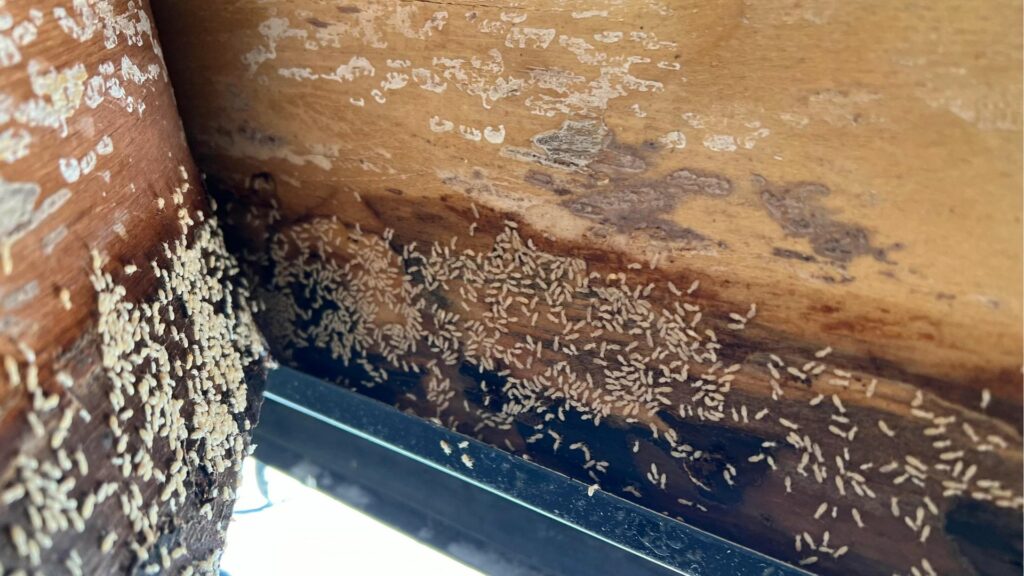
What Are Signs of Termites in an RV?
Just like a home, termites can be hazardous to an RV, as this man found out. Knowing what to watch for is essential to avoid costly damage. If you spot any of these signs, you must act fast.
For starters, the first thing you need to watch for is wood damage. This is one of the most obvious signs that you’re having a problem.
This can include hollow-sounding and sagging wood surfaces or holes where they’ve tunneled through. You’ll primarily find them in cabinets, paneling, and wood fixtures.
Next, it’s essential to watch for mud tubes. Termites use these pencil-thin tunnels to move from one food source to another. Typically, these will be on the outside of your RV.
Again, if you spot these around your RV, don’t procrastinate. This is one of those situations that will only get worse with time.
To avoid a severe infestation, you need to inspect your rig regularly. If you have termites that get into your RV, catching them early is best. The longer they can get comfortable in your camper, the harder they will be to eliminate.
How to Get Rid of Termites in an RV
If you’re unfortunate enough to discover termites in your RV, you can’t afford to ignore it. Here are the steps you need to take to avoid having a more significant situation on your hands.
Identify the Infestation
Identifying the infestation is the first step to eliminating termites in your RV. This means thoroughly inspecting your camper to assess the damage. Follow the mud tubes and look for any areas impacted that might not be obvious.
Depending on the severity of the situation, you can take care of it yourself. However, you must be honest with yourself and your abilities. Some infestations will require professional assistance.
Isolate the RV
If you can move your RV, getting it away from other wood structures is a good idea. Despite what your parents might have taught you, this is one situation where you shouldn’t share. You don’t want the termites to spread to your home or a neighbor’s property.
Once you’ve isolated it, look for openings, gaps, or cracks where these evil insects could enter your space. Use an appropriate sealant like caulk or expanding foam insulation. These critters are tiny and can sneak into small cracks and openings.
Consult a Professional
As we mentioned, sometimes you’ll want to pull all the punches and hire a professional. Trying to take care of the situation yourself can take a long time and cause more damage.
Remember, you often get what you pay for when it comes to these services. Saving a few bucks now could cost you more in the long run.
Choose Your Treatment Method
Now, it’s time to select your plan of attack. If you’re working with a professional, they’ll likely be able to provide some guidance on your specific situation. What they recommend may vary depending on how you use your camper, who is in your trailer with you, and several other factors.
The three most popular options for dealing with termites are chemicals, fumigation, or baiting systems. Chemicals and fumigation can kill the insects in their tracks and are most likely the option you will want to take with an RV.
If your going to try to tackle it on your own, we have had success with purchasing chemicals from DoMyOwn.com.
Baiting takes time and could be helpful if your RV stays stationary, but is more of a preventative measure.
Remove Infested Materials
Once you have your plan, it’s time to remove the infested items. You may have to dismantle and replace structures or materials if you have severe damage. Cabinets, wall panels, and various wood sections may need to be ripped out and replaced.
Do yourself a favor and dispose of the infested materials appropriately. Taking them to a local landfill is an excellent option. Whatever you do, make sure you comply with local regulations.
Take Preventive Measures
Finally, once the infestation is under control, take preventive measures to prevent it from occurring again. If your RV will sit stationary for an extended time, work with the professional to develop a treatment plan.
Typically, a professional will come out periodically and inspect the area. They’ll be able to notice any potential signs or evidence of termites. Additionally, they can help you keep an eye on entry points to keep these nasty critters out of your space.
While it may sound extreme, keeping a record of everything you do against the termites can be a good idea. Doing so can help you detect patterns and make it easier to keep them away or when to expect them.
Win the War with Termites in Your RV
Winning the war with termites in your RV means winning battle after battle. Will you win them all? Likely not.
However, don’t get disappointed when things don’t go as planned. Stay the course and keep working to get rid of them. Before you know it, they’ll be gone, and you’ll have a termite-free RV again. It may be difficult, but you and your RV will be glad you did it.





